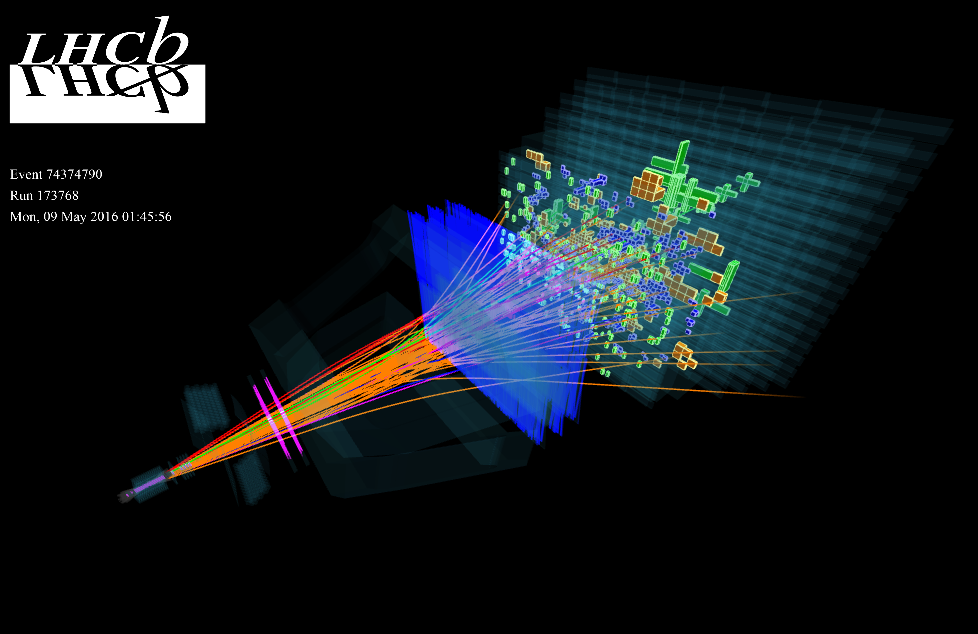
14 billion years ago, immediately after the Big Bang, the Universe was composed by an equal amount of matter and antimatter. Soon afterwards antimatter disappeared and for this reason the Universe that we see nowadays is apparently made of only matter. Why has antimatter disappeared? This is likely due to a mechanism which favours matter over antimatter: the cp violation( link to the page).
Scientists are confident that this mechanism may be well studied in the high energy collisions between protons at the Large Hadron Collider (LHC) at CERN ( European
Organization for Nuclear Research). Indeed, conditions similar to those present right after the Big Bang are reproduced in the collisions and a huge amount of different particle is created.
LHCb is one of the main experiments currently running at LHC ( Other major experiments are ATLAS, CMS, TOTEM e ALICE) which studies in particular the properties of the quarks beauty (b) and charm (c). Particles and antiparticles containing such heavy quarks are unstable and do not exist in the current Universe ( they existed in the primordial Universe and decayed very quickly), but they can be produced and measured by LHCb. Particles containing heavy quarks are very suitable candidates to understand why nature seems to prefer matter to antimatter.
Thanks to the very sophisticated detectors that make up LHCb a tremendous quantity of particle and antiparticles containing b and c quarks have been observed and very precise measurements have been made. So far those measurements have been in agreement with the underlaying theory, but they might provide hints of new physics in the future.
The LHCb collaboration consists of 1255 scientists from 74 institutes in 16 countries (as of June 2018). Hundreds technicians and engineers were also involved in the construction of the detectors. The detector components wre produced in different national labs and finally assembled at CERN. Many young researchers and PhD students work on LHCb as well.
The LHCb Genova group is involved in R&D activities of photodetectors for the RICH (Ring Imaging Cherenkov counter).
The group has the responsibility of the design, engineering and construction of the mechanical support for the MaPMT sensors, which will replace the actual hpd during the LHCb Phase 1 upgrade. Moreover, the possibility of using SiPMs for a future upgrade to HL-LHC is being investigated in our laboratory.
The LHCb Genova group is involved also in the search for exotic states and cp violation by analyzing data of the meson decays containing b quarks.
For more information: http://www.cern.ch/lhcb-public.
Members of the group: Roberta Cardinale, Flavio Fontanelli, Alessandro Petrolini, Elena Santopinto, Antonino Sergi
